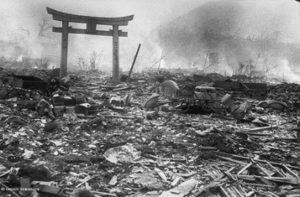The United States Army Air Force dropped a second big bomb 73 years ago today.
That one exploded over Nagasaki, Japan. The first big blast, at Hiroshima, didn’t bring Japan to the surrender table. The second one did.
The atomic age had entered the world of warfare. It was called the Manhattan Project, where some of the world’s most brilliant nuclear physicists worked to perfect the atomic bomb.
They did. It worked.
The United States had been at war with Germany, Italy and Japan for nearly four years. Germany surrendered in May 1945; Italy called it quits in 1943.
Japan was left as the remaining Axis power. President Truman, new to the office he inherited when President Roosevelt died in April 1945, had the most difficult of decisions to make: whether to use this terrible new weapon.
He went with his gut. Yes, drop the bomb and hope to save many more lives than will be lost. That calculation proved accurate, too.
Nagasaki was devastated on Aug. 9, 1945 by an even bigger bomb than the one that leveled Hiroshima three days earlier. Less than a week after Nagasaki was incinerated, the Japanese surrendered.
World War II came to an end.
President Truman said he didn’t regret deploying the bomb. Many of the great men who developed it had second thoughts. The likes of Robert Oppenheimer, Enrico Fermi and Albert Einstein eventually expressed some form of regret for their roles in developing this monstrous weapon.
We all hope never to use them again. Twice was more than enough.
I can recall a quote attributed to Einstein, who once was asked how he thought a third world war would be fought. He said, in effect, that he didn’t know with absolute certainty, but was certain that the fourth world war would be fought “with sticks and stones.”
